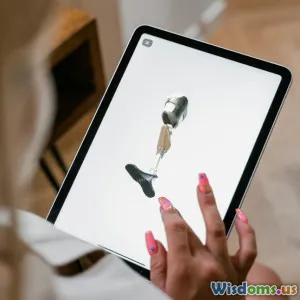
3D Printing in Medicine: Innovations and Applications
6 min read Explore the groundbreaking applications of 3D printing in medicine, from prosthetics to bioprinting, and discover its transformative potential. (0 Reviews)
3D Printing in Medicine: Innovations and Applications
3D printing, also known as additive manufacturing, has emerged as a revolutionary technology across various sectors, but its impact on medicine is particularly profound. This article delves into the transformative innovations and applications of 3D printing in the medical field, showcasing how this technology is enhancing patient care, improving surgical outcomes, and paving the way for unprecedented advancements in healthcare.
Overview of 3D Printing Technology
3D printing involves creating three-dimensional objects layer by layer from a digital model. This method allows for precise customization, making it an ideal solution for medical applications. The technology utilizes various materials, including plastics, metals, and even biocompatible materials suitable for human use.
Key Innovations in 3D Printing for Medicine
1. Custom Prosthetics and Orthotics
One of the most significant applications of 3D printing in medicine is the production of custom prosthetics and orthotic devices. Traditional manufacturing methods often result in prosthetics that may not fit perfectly, leading to discomfort or inefficiencies. However, with 3D printing, clinicians can create highly personalized devices tailored to the unique anatomy of each patient.
For instance, organizations like e-NABLE have developed 3D-printed prosthetic hands for children, which are not only affordable but also customizable in terms of color and design. This approach not only enhances functionality but also boosts the confidence and self-esteem of young patients.
2. Bioprinting Tissues and Organs
The field of bioprinting is perhaps the most exciting frontier of 3D printing in medicine. Researchers are exploring the possibility of creating living tissues and organs using a patient's own cells. This innovation could potentially eliminate the need for organ donors and reduce the risk of rejection.
One prominent example is the work being done at Wake Forest Institute for Regenerative Medicine, where scientists have successfully 3D-printed human tissues such as skin, cartilage, and even organs like bladders. These advancements could revolutionize transplant medicine and lead to breakthroughs in treating chronic conditions.
3. Surgical Tools and Planning Models
Surgeons are also benefiting from 3D printing technology through the creation of custom surgical tools and anatomical models. 3D-printed models based on patient-specific imaging data (like CT scans) allow surgeons to practice complex procedures before operating on the actual patient.
For example, Materialise offers software that converts medical imaging data into 3D-printed models, enabling surgeons to visualize and plan their approach effectively. This preparation can significantly reduce surgery time and enhance patient safety.
4. Drug Delivery Systems
Another innovative application of 3D printing in medicine is the development of customized drug delivery systems. By creating drugs in specific shapes or forms, 3D printing can enhance the bioavailability and efficacy of medications. This approach also allows for the production of personalized medications tailored to the individual needs of patients.
5. Dental Applications
The dental field has embraced 3D printing for creating dental implants, crowns, and aligners. With the ability to produce precise molds and devices quickly, dentists can offer patients faster service and improved outcomes. Companies like Align Technology have successfully incorporated 3D printing into their Invisalign process, allowing for the production of custom aligners based on each patient's dental structure.
Challenges and Future Directions
Despite the incredible advancements, 3D printing in medicine faces several challenges. Regulatory hurdles, quality control, and the need for extensive testing and validation are significant considerations that must be addressed as the technology evolves. Furthermore, the cost of high-quality bioprinting materials can be prohibitive.
However, as technology continues to advance, the future of 3D printing in medicine looks promising. Ongoing research aims to improve the efficiency of 3D printers and explore new materials that can be used in bioprinting.
Conclusion
3D printing has ushered in a new era of innovation in medicine, offering solutions that enhance patient care and surgical outcomes. From custom prosthetics to bioprinted organs, the applications are vast and varied. As the technology continues to evolve, its potential to transform the healthcare landscape is immense. Embracing these innovations will undoubtedly lead to improved patient experiences and outcomes in the years to come.
Rate the Post
User Reviews
Popular Posts



















